Convert shopper signals into revenue: A high-impact guide for apparel retailers
It’s a safe bet that when you switch from texting someone to checking your email, you don’t become an entirely different person. Nor does your personality change radically when you switch from email to Instagram. Yes, you may have specific marketing preferences distinct to each channel. But it’s the same you using each of them.
Despite this obvious fact, the channel-centric marketing model has long been dominant.
For apparel retailers, reorienting strategy around the customer, as opposed to the channel, is critical. A customer-centric approach treats the customer holistically, meeting them where they are with what interests them at precisely the right time.
Of course, actually making that shift is easier said than done. Retailers have been talking about “centering” the customer for years now. Actually putting this approach into practice requires a dramatic shift in how you approach shopper signals.
Enter: Customer movement.
Customer movement is the practice of understanding customer value, in order to continuously move shoppers through the lifecycle through strategies that create a more robust, active customer base. Making it work for your brand requires understanding the four distinct stages of the customer lifecycle:
- Acquisition: Unknown to identified shopper
- Conversion: Non-buyer to first-time buyer
- Retention: First-time buyer to active buyer
- Loyalty: Retained or reactivated buyer
Every action a shopper takes — or doesn’t take — represents a signal. These shopper signals are critical for retailers to make informed decisions on how best to reach and engage them. The Bluecore Globe below illustrates the wide range of tactics retailers can use to respond to these signals, offering them a necessary edge in a hyper-competitive market. At every second, your competitors are trying to lure your customer away. Signal-based strategies can keep shoppers buying from you again and again.
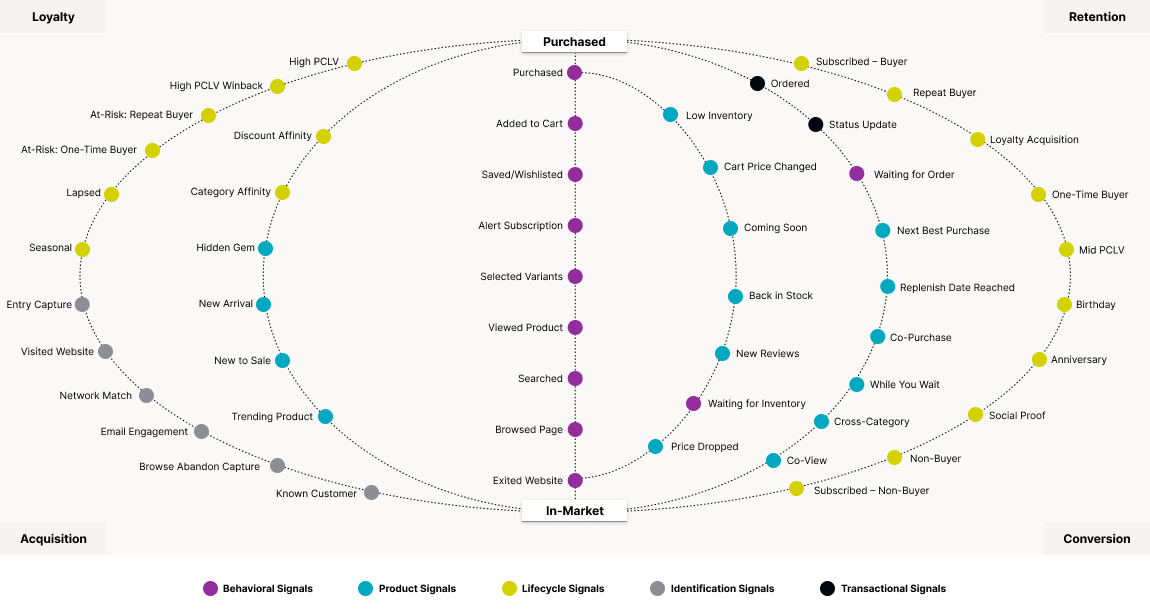
We’ve developed this based on the expertise and experience of our in-house team of retail strategists, who have previously worked at brands like Target, Tory Burch, Foot Locker, Champs Sporting Goods, Overstock.com, and Rent the Runway. They’ve witnessed firsthand what works and what doesn’t, and distilled those lessons into high-impact strategies for each stage of the customer lifecycle.
Identification is the foundation
Identity recognition is the engine that powers customer movement. Identification is the ability to recognize a shopper by email or phone number and match them to previously collected behavior.
If you don’t know who a shopper is — if you can’t directly contact them, and don’t know where they are in their customer journey — you can’t hope to effectively tailor the shopping experience.
Email capture is crucial here. When you have a shopper’s email, you can contact them directly with newsletters, discounts, and product recommendations, leading to higher conversion rates and more effective long-term relationship building.
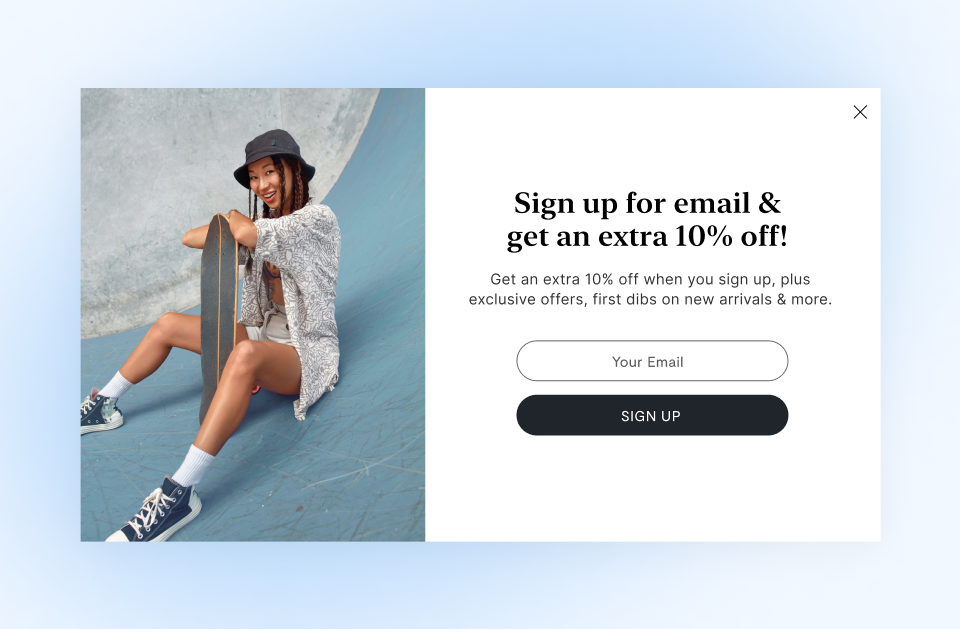
The fact that shoppers have to opt-in to these emails makes them a powerful marketing tool. But it also means retailers need to give them a compelling reason to opt-in. Discounts, promo codes, and instant access to new products can all be powerful motivators here.
People send a galaxy of shopper signals each time they interact with your brand—but these signals are effectively unreadable if your shoppers haven’t been identified.

Acquisition: From unknown to identified shopper
Once your identification mechanisms are in place, you can start optimizing tactics at each stage of the customer lifecycle, starting with acquisition. Here, the goal is to generate interest and get shoppers in the door. Once you’ve done that, though, there are a few important tactics to keep in mind.
Use your best to acquire the best
Every shopper is unique, but taking a bird’s-eye view, you can slot them into various sub-groups once you know enough about them. And in an acquisition context, few groups matter more here than your already-loyal customers. Digging into your pre-existing data, it should be easy to assemble a profile of your best customers. Take that data, and use it to target shoppers who match their attributes in paid media campaigns.
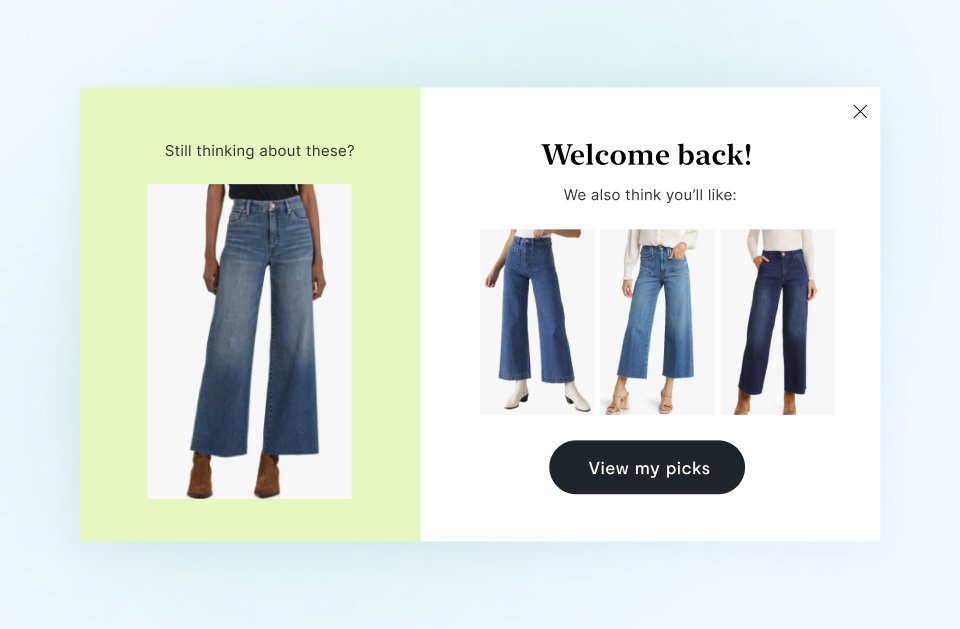
…but don’t forget to keep specific business targets in mind
Past purchases and CRM data are helpful when building lookalikes of your best customers, but ultimately you’re trying to acquire shoppers who will be most valuable for your brand down the line. Of course, the question then becomes, who are your “best” customers?
Using a predicted customer lifetime value model can go a long way here, accounting for things like frequency of site visits and on-site behavior. Combined with attributes like a shopper’s discount affinity, this information can help you build robust lookalikes and find just the right new shoppers for your brand.
Bluecore Pro Tip: Create multiple modals to welcome site visitors, rather than asking everyone for their email address. Distinguish between those who are known and unknown, and treat them accordingly.

Conversion: From non-buyer to first-time buyer
Once you’ve identified a shopper, the goal is to start converting. There are a few tactics almost guaranteed to turn shoppers into customers.
Look at the shopper signals everywhere
From the moment a shopper is identified, you’re learning about them. Maybe they have an affinity for a particular product category. Maybe they’re checking a size guide. Maybe they’ve put a product in a cart and then abandoned it. Because you’ve identified them, you can read these signals clearly, and use them to increase the relevance of your recommendations.
For instance, let’s say your shopper clicks on an out-of-stock dress in size medium. Instantly, you know their size preference, and can use that insight to target them with relevant “while you wait” recommendations for products in the same size.
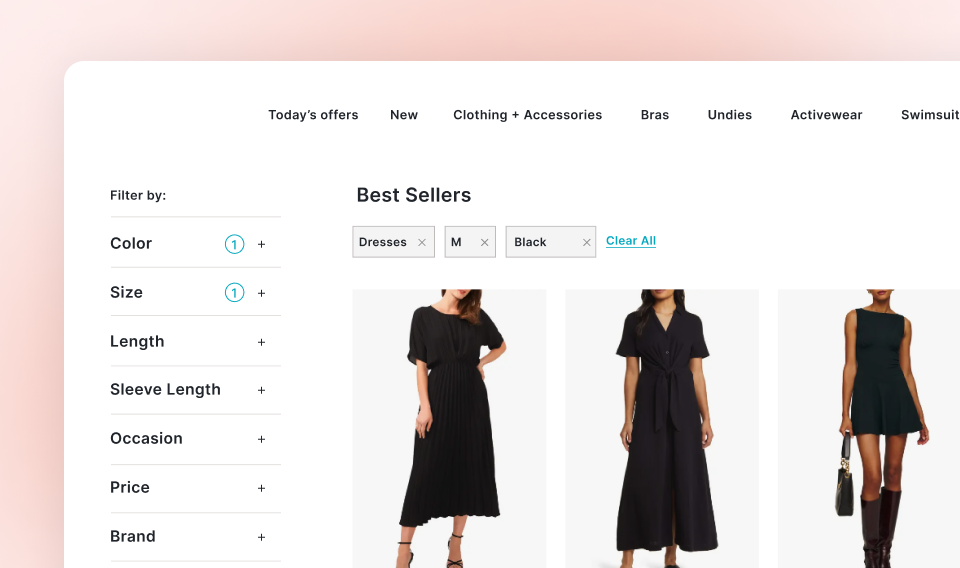
Pay attention to product signals
Let’s say a shopper browses a t-shirt and decides it’s not for them. You could spend the next six months following them around the internet with that same shirt. But from long experience, we know this is rarely effective.
Are there other t-shirts that similar customers were more likely to buy? Or shirts that are similar to the rejected t-shirt, but with a few key differences (say, a pocket or a different color or material)? Targeting your shopper with those, instead of the shirt they already rejected, is more likely to lead to a successful outcome. For apparel retailers, who often have very large product catalogs, this method of targeting can bring attention to items that might otherwise get lost in the shuffle.
Leverage real-time decisioning
Apparel retailers deal with large product catalogs and rapid shifts in inventory. At any given moment, products on your site are going out of stock or dropping in price. New products are being added and old ones are being eliminated. And of course, every item must then be multiplied by the number of sizes and colors available. This excess inventory can pose a real risk to your business. By integrating this real-time product data — with your individual shopper signals, you can optimize your overall sales strategy while keeping customers engaged.
Bluecore Pro Tip: Customer and product signals are both powerful — and combining them is the most powerful of all. Building your tactics based on this winning combination will expose shoppers to the broadest, most relevant components of your catalog.

Retention: From first-time buyer to active buyer
Although each stage of the lifecycle is important, it’s retention that matters most. Once a customer buys twice, the likelihood of buying a third time goes up 95%. Those repeat customers are the core of any retailer’s business, and nothing has a bigger impact on profitability.
Add value post-purchase
One of the most important things you can do during the retention stage is add value to the experience and reinforce the customer’s decision to shop with you. Order confirmations and shipping updates can promote trust here, and reassure the customer as they wait for their item. This can also be a time to plug loyalty programs or brand apps. Once the product arrives, retailers can continue adding value through brand affinity moments. You can send them care guides or usage tips, and bring their attention to complementary products that might enhance the purchase. For instance, if the customer purchased a handbag, you can bring their attention to a cleaning kit.

Simplify the return process
Returns are inevitable, and don’t necessarily impact a customer’s perception of your brand. That said, a needlessly complicated return process can turn a customer away for life. To prevent that from happening, you want to make sure your return process is as streamlined as possible. Reverse logistics companies like Happy Returns can play a useful role here, and so can simplifying the in-store returns process. In fact, by using customer data to flag nearby physical stores for returns, you can quickly get your customer back into the shopping phase.
Help your customer complete the look
Purchases are incredibly valuable shopper signals. For one thing, they give you a clearer sense of their style preferences. For another, you now know that they own a new dress. This might sound obvious, but for retailers it represents a major opportunity. You can now help your customer complete their look, drawing their attention to complementary products: accessories, hats, shoes, undergarments. As they explore these other categories, you’ll get an influx of new and valuable signals. And if the customer does make another purchase, the odds of them becoming a valuable frequent buyer increase significantly.
Bluecore Pro Tip: If a buyer makes a purchase and doesn’t come back in three months, that’s a signal, too. Put these customers into at-risk flows. Think about where and how they’re engaging, and use that to motivate the next purchase.

Loyalty: Retained or reactivated buyers
Loyalty doesn’t mean accumulating points on your app, or frequent site log-ins. There is only one metric that matters here, and it’s purchase frequency over time. For the vast majority of retailers, the bulk of profits will come from the customers you already know. Keeping them engaged is a continuous process, and requires constant nurturing. But the results are worth it. Where channel-led growth leads to a 22% retention rate over the course of three years, that number for customer-led growth is 59%.
Offer your best customers exclusive perks
Tried-and-true loyalty programs are a great way to keep customers coming back again and again. But the vast troves of data modern retailers have access to today, you might not even need them. You know who your highest-value buyers are, and can target them with special perks, like expedited shipping, the opportunity to pre-order new products, and early access to sales. All of these can help increase loyalty and, ultimately, revenue.
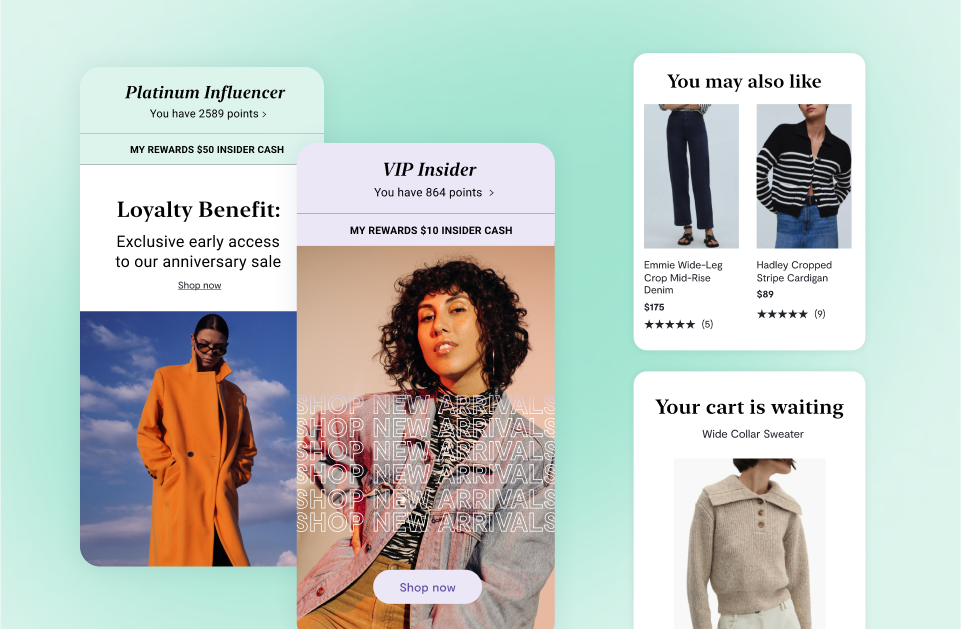
Use predictive models and affinity signals
By now, your customer has moved through at least three stages of the lifecycle: acquisition, conversion, and retention. Along the way, they’ve left a detailed trail of shopper signals: information about their behaviors and preferences. Inevitably, there are patterns in these trails, and these patterns can be used to predict, and capitalize on, future behavior. This is especially helpful with customers you’re at risk of losing. Let’s say you have an at-risk customer who you know is motivated by certain kinds of discounts. Leveraging AI-enhanced data analytics, you can take automatic action to pinpoint these customers and target them based on what they’re likely to do next.
Bluecore Pro Tip: Personalization is most paramount with your most engaged customers. If a customer is a loyalty member, include that branding in every communication and make sure it’s consistent across every channel.
The rare loyal buyer stays a loyal buyer for life. More likely, that customer will disappear for a time, at which point it is the job of the retailer to once again move them through the cycle.
This time, though, it should be easier because the retailer has a lot more information to work with. The more a retailer knows about a customer — the more signals they have to work with — the more effectively they can move that customer through the lifecycle.
In the end, it is those shopper signals that matter most. Developing the ability to track them is half the battle.

